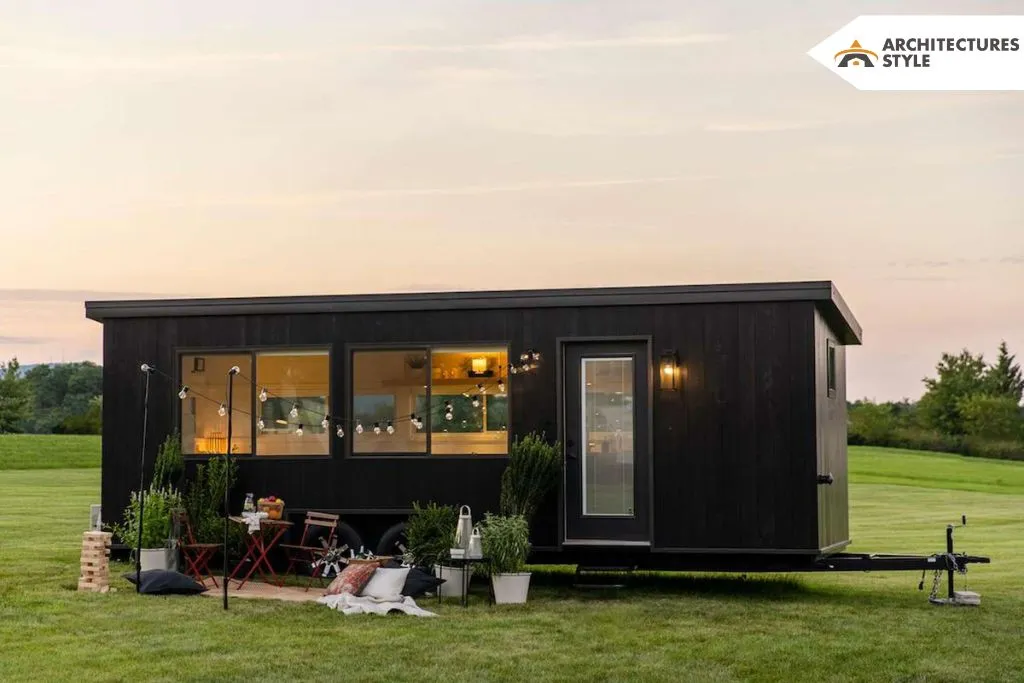Portable houses are rapidly gaining popularity around the world, and it’s easy to see why. With the rise of minimalist lifestyles, the need for flexible housing options, and the push for environmentally-friendly living, these homes offer a unique solution that’s practical, affordable, and adaptable. Whether you’re looking to downsize, explore new places, or reduce your environmental footprint, portable houses provide an exciting alternative to traditional homes. In this article, we’ll explore everything you need to know about portable houses, including their benefits, different types, and tips for choosing the right one. Let’s dive in and see why portable houses are revolutionizing the way people live!
What Are Portable Houses?

At its core, a portable house is a type of dwelling designed to be easily moved from one location to another. Unlike traditional homes, which are fixed in place, portable houses are built with mobility in mind. They’re usually smaller than conventional homes, but they come equipped with everything you need to live comfortably. Some portable houses can be towed by vehicles, while others are pre-built and transported to a location where they’re set up.
Portable houses are also known as mobile homes, tiny houses on wheels, or modular homes, though each of these terms has slight differences. Whatever you call them, portable houses have one thing in common: they give you the freedom to live wherever you choose.
Why Are Portable Houses So Popular?
There are several reasons why people are turning to portable houses as a housing solution. Here are a few of the most common ones:
- Affordability: Portable houses are often cheaper than traditional homes. They require fewer materials, and the reduced size also lowers utility and maintenance costs.
- Flexibility: These houses allow you to pick up and move whenever you want, making them ideal for people who want a flexible lifestyle.
- Sustainability: Portable houses are generally more eco-friendly because they require fewer resources to build and can be designed with energy-efficient features.
- Minimalist Lifestyle: With limited space, portable houses encourage a simpler, clutter-free lifestyle, focusing on only the essentials.
For many people, portable houses represent freedom—freedom from a mortgage, freedom to travel, and freedom to live a more sustainable life.
Different Types of Portable Houses
There’s a surprising variety of portable houses to choose from, each offering unique features and benefits. Here’s a look at some of the most popular types:
1. Tiny Houses on Wheels
Tiny houses on wheels, often just called “tiny houses,” are small, fully functional homes built on trailers. They’re usually between 100 and 400 square feet, making them compact but cozy. Because they’re on wheels, tiny houses are easy to move and can be towed by a truck to different locations.
2. Shipping Container Homes
Shipping container homes are exactly what they sound like—homes built out of repurposed shipping containers. These homes are highly durable, weather-resistant, and customizable. Shipping container homes can be combined to create larger spaces, and because they’re made from recycled materials, they’re an eco-friendly option.
3. Modular Homes
Modular homes are built in sections at a factory and then transported to a site where they’re assembled. Unlike tiny houses or shipping container homes, modular homes can be quite large, often as spacious as traditional homes. However, they’re still considered portable because they can be disassembled and relocated if needed.
4. Yurts and Geodesic Domes
Yurts and geodesic domes are unique, round structures that offer a different kind of portable housing. Traditionally used by nomadic cultures, yurts are now popular for eco-conscious people who want a minimalist lifestyle. They’re lightweight, easy to set up, and surprisingly comfortable.
5. RV and Motorhomes
While not a “house” in the traditional sense, RVs and motorhomes are popular choices for people who want to live on the road. These vehicles come with built-in living spaces, including kitchens, bathrooms, and sleeping areas. They’re perfect for those who want the freedom to travel without giving up the comforts of home.
Pros and Cons of Living in a Portable House
Living in a portable house is an exciting and adventurous choice, but it’s not for everyone. Here are some pros and cons to consider:
| Pros | Cons |
|---|---|
| Affordable | Limited space |
| Eco-friendly | Fewer amenities than traditional homes |
| Freedom to move | Finding parking or land can be challenging |
| Encourages a minimalist lifestyle | Requires regular maintenance |
| Lower utility costs | May not be suitable for large families |
Portable houses offer a unique lifestyle that works well for some people but might not fit others. It’s essential to weigh these factors carefully before making the switch.
How to Choose the Right Portable House
If you’ve decided that a portable house might be right for you, the next step is choosing one that fits your lifestyle and budget. Here are some tips to help you make the right choice:
1. Define Your Purpose
Think about why you want a portable house. Are you looking for a full-time residence, a vacation home, or a mobile office? Defining your purpose will help you determine what kind of portable house you need. For example, if you want to travel frequently, an RV or a tiny house on wheels might be ideal. If you need more space, consider a modular home.
2. Set a Budget
Portable houses come in a wide range of prices, from budget-friendly options like used RVs to high-end, custom-built tiny houses. Establish a budget to narrow down your options. Don’t forget to account for additional costs like land rental, insurance, and transportation.
3. Consider Your Space Needs
Portable houses are generally smaller than traditional homes, so it’s essential to think about how much space you need. If you’re comfortable with minimal belongings, a tiny house might work for you. However, if you have a family or need extra storage, a larger modular home or shipping container home could be a better fit.
4. Research Local Regulations
Before purchasing a portable house, check the zoning laws and regulations in the area where you plan to live. Some places have strict rules about where portable houses can be parked or set up. Make sure your portable house is compliant with local building codes to avoid any legal issues.
5. Look for Quality Materials and Workmanship
Since portable houses are designed to be moved, they need to be durable. Look for houses made with high-quality materials that can withstand frequent relocation and various weather conditions. Ask about insulation, ventilation, and energy efficiency to ensure that your home is comfortable and cost-effective to maintain.
The Benefits of a Portable House Lifestyle

Choosing to live in a portable house can lead to a variety of lifestyle benefits. Here’s a look at some of the main advantages:
- Financial Freedom: Without the hefty mortgage payments of a traditional house, portable house owners often have more disposable income. This financial freedom can lead to a less stressful, more fulfilling life.
- Environmental Impact: Portable houses are often smaller and use fewer resources, which reduces their impact on the environment. Many portable homes are built with sustainable materials, solar panels, and composting toilets, further minimizing their ecological footprint.
- Simplified Living: With less space, you’re encouraged to focus on the things that truly matter. A portable house pushes you to declutter and live with intention, which many people find to be rewarding.
- Flexibility and Adventure: If you’re someone who loves change, a portable house gives you the flexibility to live in new places whenever you want. It’s an adventurous lifestyle that allows you to experience different communities, climates, and cultures.
Common Myths About Portable Houses
Portable houses are often misunderstood, leading to several myths and misconceptions. Let’s debunk a few:
- Myth 1: Portable houses aren’t safe. In reality, well-built portable houses are designed to withstand transportation and various weather conditions.
- Myth 2: Portable houses are only for “hippies” or people who want to live off the grid. People from all walks of life are choosing portable houses, from retirees to young professionals.
- Myth 3: Portable houses are too small to live comfortably. Many portable houses are cleverly designed with space-saving features, making them surprisingly comfortable and functional.
Are Portable Houses Right for You?
So, is a portable house the right choice for you? The answer depends on your lifestyle, goals, and willingness to embrace change. Portable houses can be a fantastic option for people looking to simplify their lives, reduce their expenses, and enjoy a more flexible lifestyle. However, they’re not ideal for everyone. Large families, people with extensive belongings, or those who crave stability may find portable houses challenging.
Conclusion
In today’s world, where people are looking for sustainable, affordable, and adaptable housing options, portable houses offer a solution that ticks all the boxes. They provide an exciting alternative to traditional homeownership and allow for a lifestyle filled with freedom and adventure. Whether you’re considering a tiny house, a modular home, or a shipping container conversion, portable houses give you the opportunity to live on your terms.
From cutting down on costs to reducing your environmental impact, the benefits of portable houses are undeniable. So, if you’re ready to embrace a simpler, more flexible way of living, a portable house might just be the perfect home for you.
In the end, portable houses represent more than just a place to live—they’re a symbol of freedom, resilience, and innovation. So why not take the leap and explore what portable houses have to offer?

